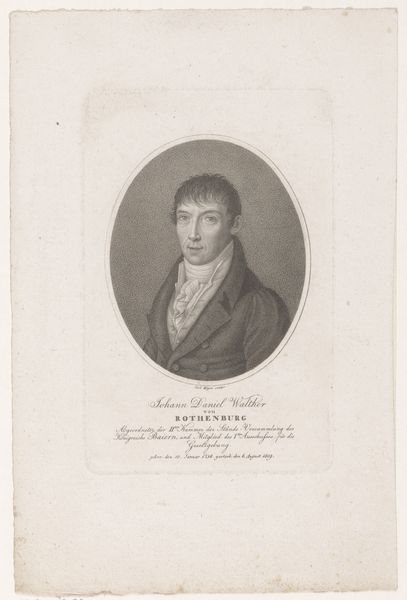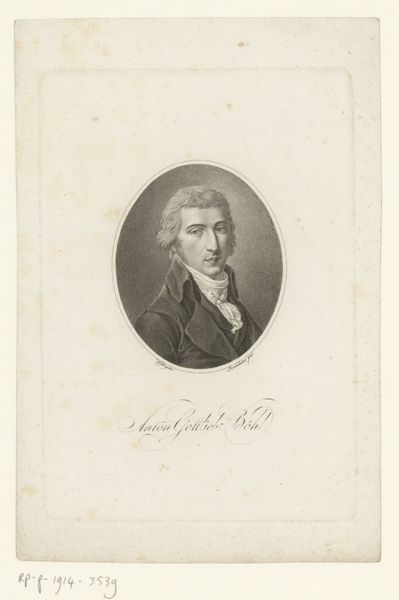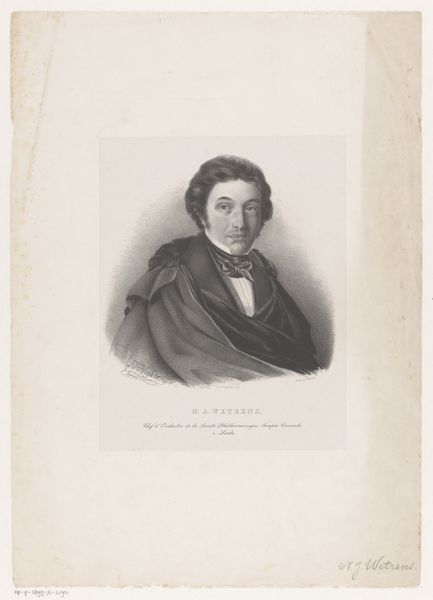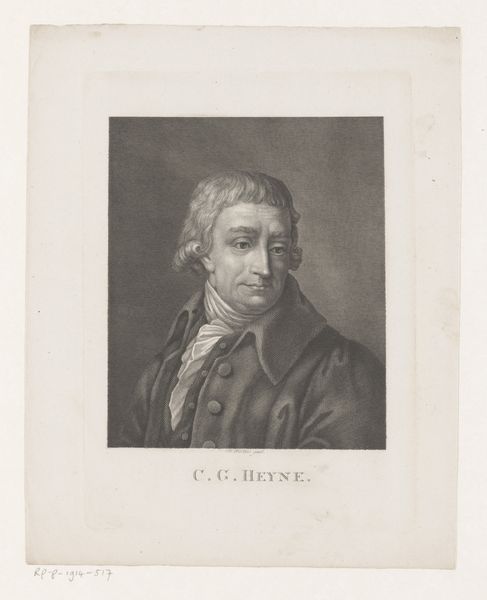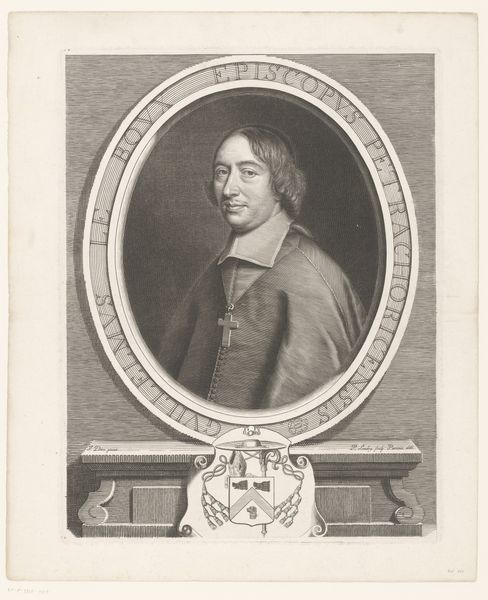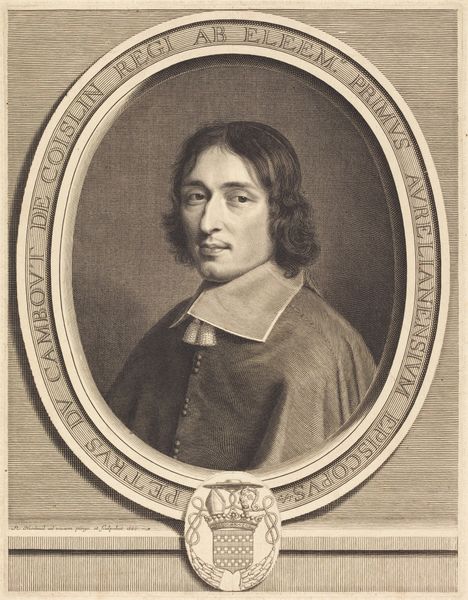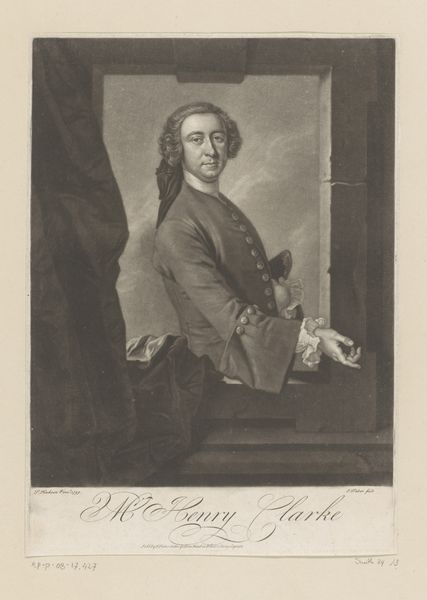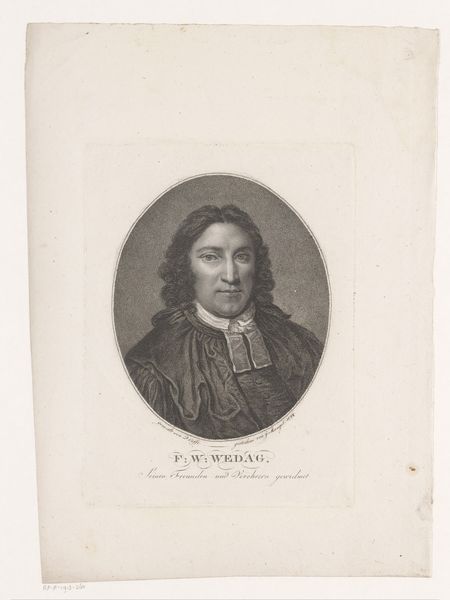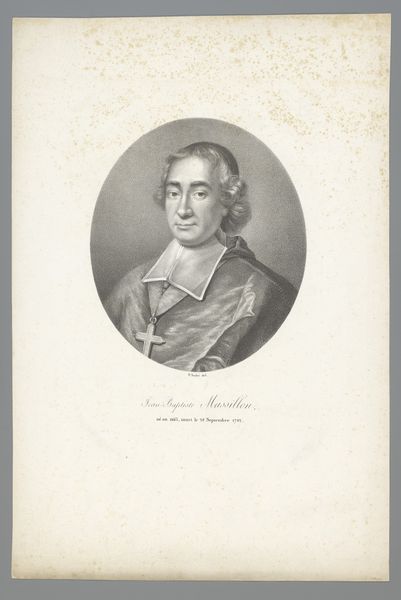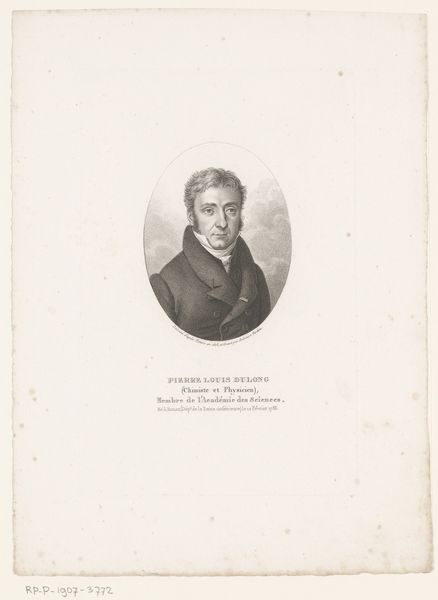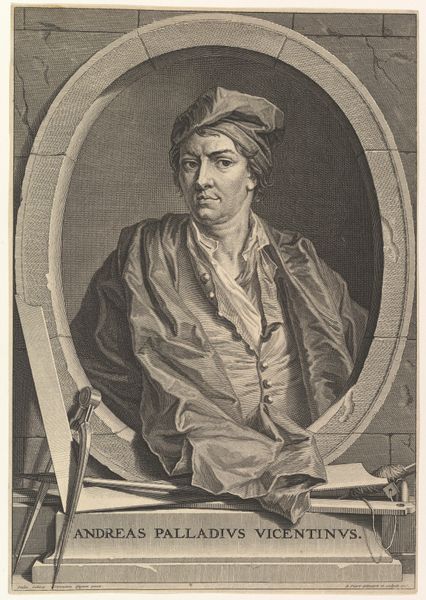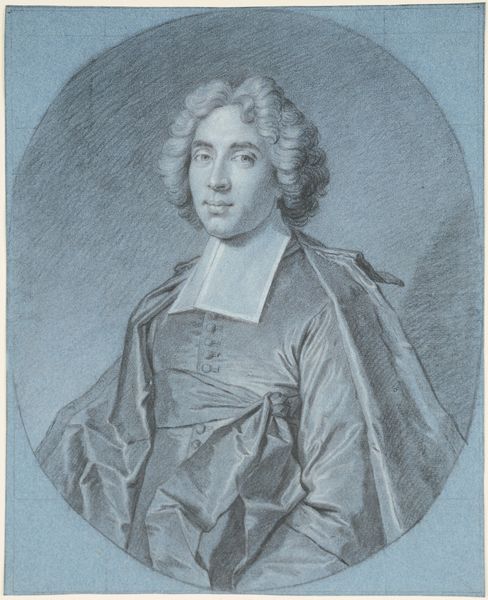
engraving
#
portrait
#
neoclacissism
#
engraving
#
realism
Dimensions: height 452 mm, width 329 mm
Copyright: Rijks Museum: Open Domain
Curator: Let's discuss this compelling print, "Portret van Benjamin West", crafted sometime between 1741 and 1800 by William Pether. It's an engraving, showcasing a portrait within an oval frame. Editor: My immediate impression is one of quiet ambition. The subject gazes off to the side with a focused expression. It also has a wonderful texture. Curator: The portrait itself, typical of Neoclassicism, presents West with an air of refined intellect, placing him within a visual language that linked individuals to broader historical and philosophical ideals. He's positioned as a figure of significance, not just a man, but an embodiment of Enlightenment values. Editor: It’s fascinating how the engraving medium allows for such subtle gradations in tone, giving the fabric of his coat a real weight and luxurious feel. The process involved a painstaking control of the tools to create those effects, and it's the tangible evidence of skilled labor. It raises interesting questions about the consumption and display of this image, how the materiality of the engraving might contribute to its cultural value. Curator: Absolutely, and we must think about Benjamin West’s own complex identity and position within the art world. As an American artist who achieved immense success in England, his portrait complicates simple narratives of national identity and artistic influence. Editor: The framing device too—the oval—it feels like a manufactured form, highlighting the controlled circumstances of the artist and sitter. The artist chose the medium intentionally, probably aware of what materials meant. Curator: The print provides an accessible way to circulate his image and, by extension, the values associated with him within broader social and intellectual networks. This form flattens West as both subject and object into the same visual plane. It places him within the realm of discourse and legacy building. Editor: Thinking about it that way allows us to really connect with this time, rather than viewing West as some distant icon. Curator: Indeed. This artwork highlights the relationship between material practices and constructions of identity and how images can become active agents in social and intellectual exchange. Editor: Considering its production allows an engagement with the way it spoke and still speaks, to questions of power, social role, and visibility.
Comments
No comments
Be the first to comment and join the conversation on the ultimate creative platform.

